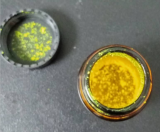- Category :
Laboratory Chemicals
- CAS NO :
- EC NO :
- Molecular Formula :
- Main Specifications :
- Synonyms :
Product description:
Something about acridinium ester (NSP-SA-NHS)
Acridine esters (NSP-SA-NHS) CAS: 199293-83-9 and related compounds have been proven to be very advantageous chemiluminescent labels, with stability, activity and sensitivity exceeding those of radioactive isotopes. Under alkaline conditions, the NHS will leave and the acridine ester will bind to the protein with a stable amide bond to form an acridine compound. After the reaction is completed, the excess acridine salt is removed through a desalting column. In the presence of alkaline hydrogen peroxide, acridine-labeled protein does not require enzymatic catalysis to emit light on its own. After adding the excitation reagent, the system immediately releases photons, which can be detected with a 430nm standard photometer. This light-emitting process is very short (the entire process occurs in less than 2 seconds), and the trigger scheme must add an internal photometer and photon detector. Proteins, peptides, antibodies, and nucleic acids can all be labeled with acridine. The labeled compound emits light rapidly under the excitation of basic hydrogen peroxide, and the labeled compound can be detected by collecting photons.
Product stability:
1. It is stable in acidic solution (pH<4.8), and the protein conjugate is stored at room temperature for 4 weeks, and its photon yield does not decrease. The freeze-dried product can be stored for more than one year at -20C.
2. When pH>4.8, especially in alkaline solution, the acridine compound is partially hydrolyzed to reduce its stability, and the hydrolysis process is a dark reaction process that does not emit light; the degree of hydrolysis increases with the increase of pH, and the degree of hydrolysis increases with the increase of temperature. Increase and increase.
3. The stability of acridine amide is higher than that of acridine ester structure, and the ability to resist hydrolysis is stronger.
4. Acridine ring or phenol ring or benzene sulfonyl ring is connected with a methyl group and other electricity-donating groups. Due to the large steric hindrance, the thermal stability is increased; the electron withdrawing group is attached, which is beneficial to the nucleophilic substitution reaction Its stability decreases.
5. Suggestion: Use a weakly acidic buffer as much as possible for the storage buffer after coupling, and bubbling nitrogen to remove oxygen. Store at low temperature, sealed and protected from light. Conditions can be made into freeze-dried samples and then stored.
Precautions:
5. The acridinium ester luminescence process is very short (the whole process takes less than 2 seconds), and the trigger scheme must add an internal photometer and photon detector; in addition, this product can also use a multifunctional microplate reader equipped with an autosampler Perform luminescence data collection to minimize the influence of sample addition time on the collected signal.
 CN ChemNet > Gold Suppliers > Hubei new DE sheng material science and technology co., LTD. >
CN ChemNet > Gold Suppliers > Hubei new DE sheng material science and technology co., LTD. > 